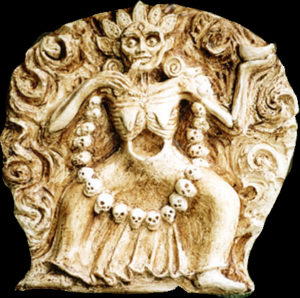Tantra & Possession – II
In my April 2017 Treadwells Lecture, I briefly touched on the growth of theistic religions in India during the early centuries of the common era. With the rise of theistic forms of religion, we get different articulations of how to enter into an intense, affective relationship to one’s chosen deity. Some devotees sought to absorb the power of their deity through the exchange of glance – darśan – a reciprocal act of seeing & knowing. Similarly, ingesting food (prasad) allows the divine grace of the deity to enter the body and thereby diminish the boundary between devotee and deity. Another powerful means to establish a relationship with deity is to take on the form of the deity – or take on a form that is considered pleasing to the deity. This doesn’t necessarily involve possession – but it’s not difficult to see how, once these ideas become popular, they can quickly develop into possession by a deity as indicative of a state of grace or power. Continue reading »

